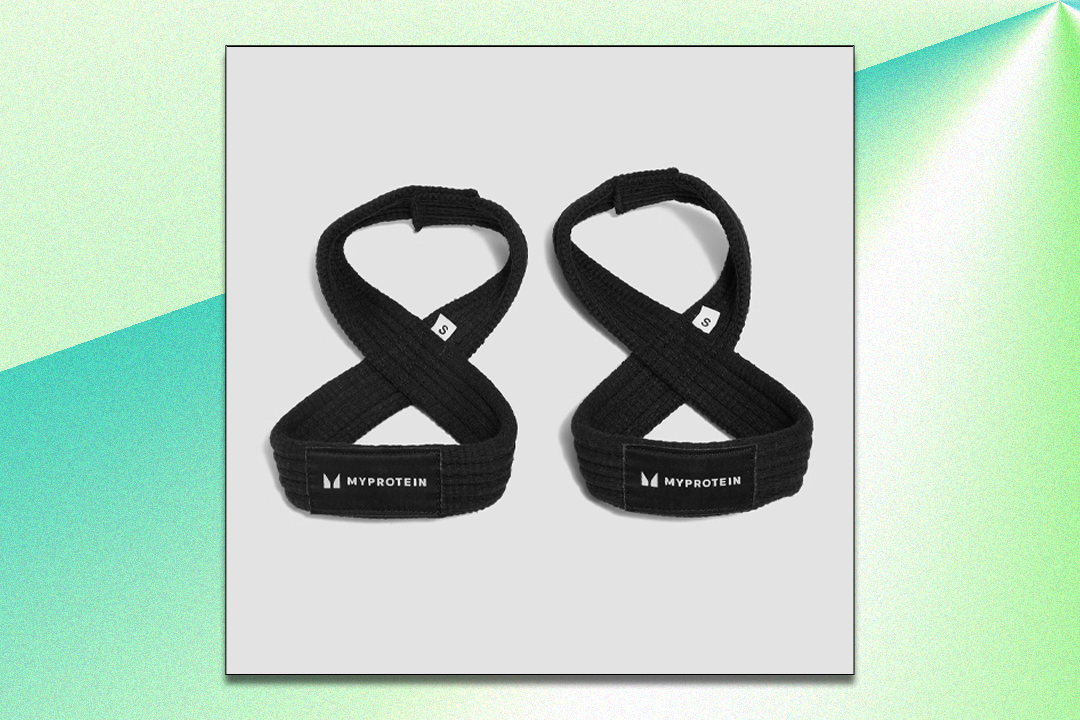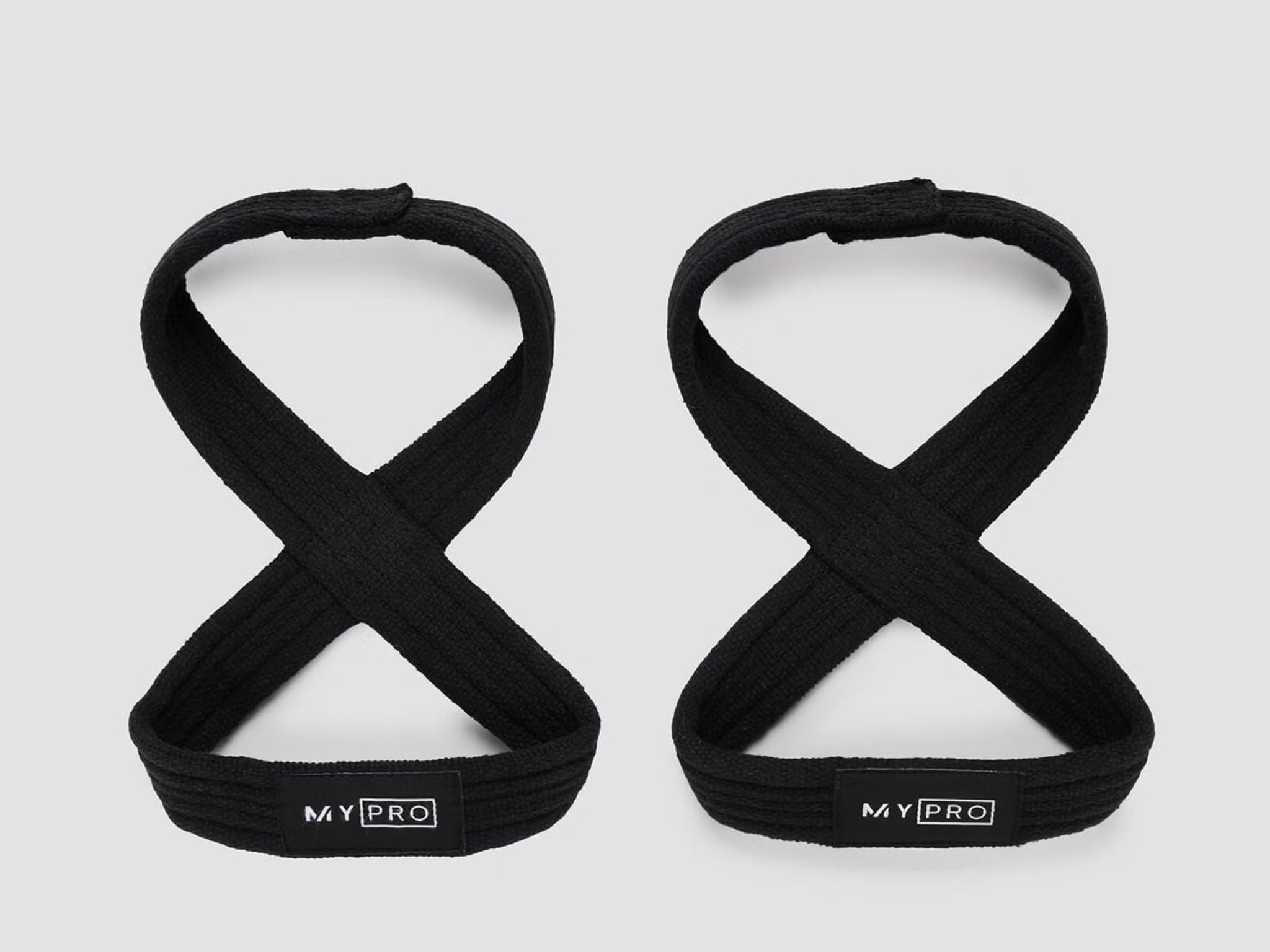Lifting straps can help you build stronger legs, and they cost less than £10
Stop worrying about your grip during deadlifts, and start building a seriously strong lower body

Picture the scene: you’re working through a heavy set of deadlifts when you notice your fingers starting to slip from the barbell. The bar falls, the set’s finished, but the rest of your body still feels surprisingly fresh. This is where lifting straps might come in handy.
If it’s your grip letting you down on exercises like deadlifts, rack pulls and rows, you might not be giving your other muscles the chance to live up to their full potential. Lifting straps eliminate this weak link, so you can put more focus into working your legs and back closer to failure, providing the stimulus needed for building strength and muscle.
They’re not much to look at – small fabric straps with padded areas that sit around your wrist – but using these underrated accessories can help you take your weightlifting to the next level. Below, you’ll find a beginner’s guide to lifting straps, with all the information you need to decide if they deserve a spot in your gym bag.
Types of lifting straps
For regular gym-goers, there are two main types of lifting straps you need to know about; lasso and figure-eight (Olympic weightlifters have a couple of extra options). Choosing which is right for you to use will largely come down to personal preference and how you work out.
Lasso straps
These straps are long pieces of fabric with a loop on one end – not unlike a lasso. The open end of the fabric passes through the loop to create a circle, which is placed around the wrist, then you wrap the remaining fabric around the barbell to secure your grip. This can be a little fiddly to set up, and takes a bit of practice to get it right. But once you’ve mastered it, these straps offer a tight and secure grip. You can usually pick a pair up for less than a tenner too.
Figure-eight straps
Like the lasso before them, these straps are named after their shape. They comprise a piece of fabric stitched into a figure of eight. To use them, place your wrist through one of the loops then feed the strap under the bar before putting the same wrist through the other loop. Grip the bar so the middle of the eight sits outside your wrists, then you’re good to go. These are often marginally more expensive than lasso straps, and I find they don’t feel quite as secure. But they’re easier and more efficient to use, allowing you to start lifting sooner.
Benefits of lifting straps
The body adheres to the SAID principle, which stands for “specific adaptation to imposed demands”. This simply means that your body adapts to better handle the tasks you consistently ask it to do, so if you want to strengthen a muscle you have to challenge it.
Now, unless you’re Popeye, your forearms will be significantly smaller than your legs, so it makes sense that the muscles in this area will be the first to fatigue when you’re lifting a heavy weight from the floor.
Apply the SAID principle to this situation and you can see how a deadlift that obliterates your grip could be a good way to strengthen your forearms. But it might not deliver a sufficient stimulus to bolster other muscles involved in the exercise like those in the legs and back.
By using lifting straps, you can perform exercises like the deadlift or bent-over row to the point where they’re challenging larger muscles in the thighs, buttocks and back, without worrying about your grip giving out. This can help you build strength and muscle in these areas.
Drawbacks of lifting straps
The primary benefit of lifting straps is also their biggest drawback: they don’t allow you to develop your grip. A strong grip has plenty of everyday applications, from cracking open the tightest jars to hauling heavy shopping bags to and from your car, so it pays to work on this area in the gym.
To remedy this, you can include specific exercises like farmer’s carries, dead hangs and plate pinches in your workouts to target your grip. Or you can only use the lifting straps for your heaviest sets, so your grip is still exposed to some challenging weights.
Lifting straps to buy
MyPro figure of 8 lifting straps: Was £12.00, now £7.99, Myprotein.com

Though lasso lifting straps offer a slightly more secure grip, I still prefer using the figure-eight variation. They’re much easier to get into position, minimising any faffing between stepping up to the barbell and starting my set. This pair has a heavy-duty cotton construction, so even your heaviest deadlift shouldn’t trouble them.
Read more: I tried exercising with ankle weights – these are the benefits and results
Join our commenting forum
Join thought-provoking conversations, follow other Independent readers and see their replies
Comments




Bookmark popover
Removed from bookmarks